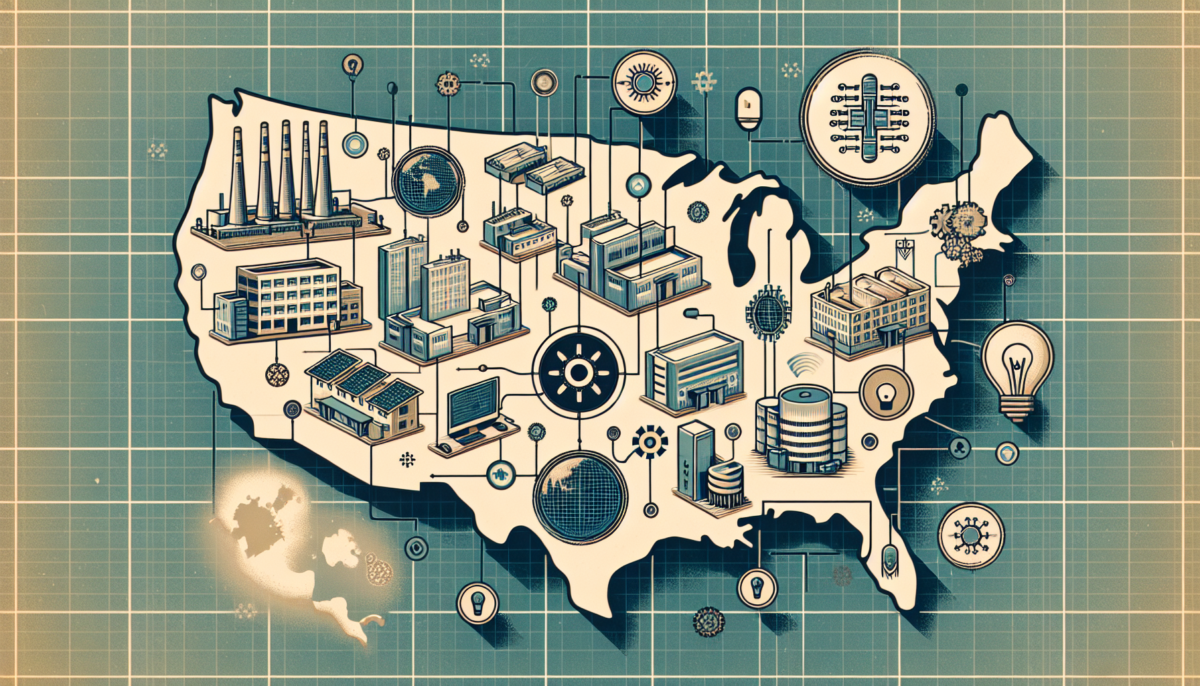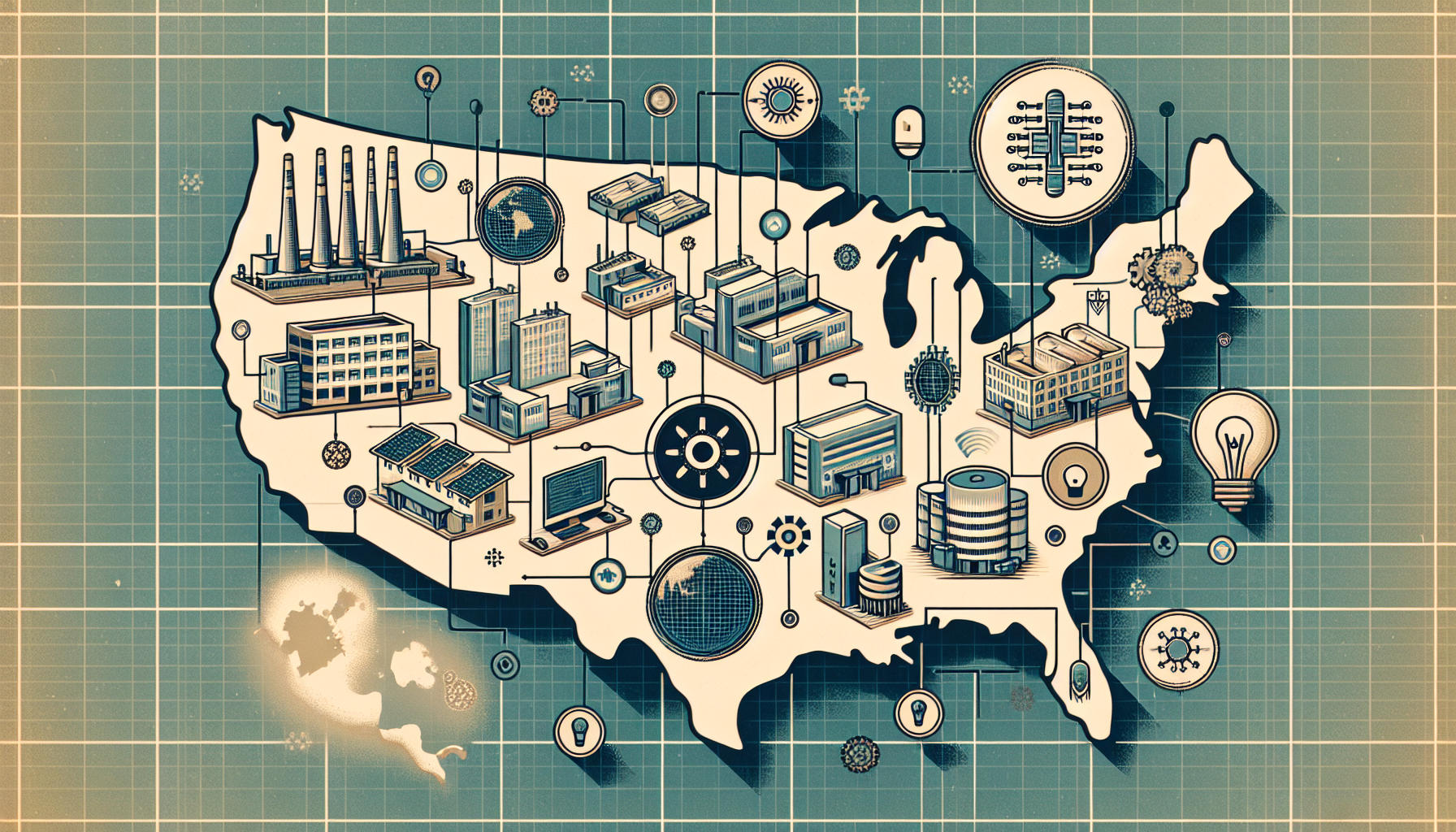US to Initiate AI Initiatives at Energy Department Locations
We independently review everything we recommend. When you buy through our links, we may earn a commission which is paid directly to our Australia-based writers, editors, and support staff. Thank you for your support!

Brief Overview
- US selects 16 Department of Energy (DOE) locations for AI data centres and energy production facilities.
- Project spurred by increasing AI demands and future energy infrastructure considerations.
- Locations previously used for nuclear arms development are now being converted for sustainable energy and technological advancements.
- Rapid construction is set to begin, with operational status anticipated by 2027.
- Encouragement for public-private collaborations to facilitate AI-enhanced data centres and energy projects.
- Focus on nuclear, solar, and wind energy to meet the energy requirements of AI technologies.
Extensive AI Energy Infrastructure Initiatives Across DOE Locations

The United States is launching an extensive initiative to erect artificial intelligence (AI) infrastructure at 16 Department of Energy (DOE) locations. In light of an extraordinary increase in demand for AI-driven computing, these sites are being designated for cutting-edge data centres and energy production facilities, which will include nuclear, solar, and wind energy sources.
This project is being framed as a tactical effort to position the US as a leader in the global AI arena, while also addressing the substantial energy requirements that accompany technologies such as large language models, generative AI, and machine learning systems.
AI Demand Sparks Energy Infrastructure Expansion
AI models, notably those powering chatbots, automated processes, and cloud services, require immense computational resources. This represents the first significant rise in US power demand in over 20 years, primarily driven by AI and cloud computing rather than legacy industries.
Data centres supporting these applications are energy-hungry, needing both strong grid connections and expandable energy sources. Estimates from grid operators suggest that AI-related data centres could represent as much as 10% of the total electricity consumption in the US by 2030.
Strategically Selected Locations with Accelerated Development
The DOE has identified locations such as Idaho National Laboratory, Portsmouth (Ohio), and Paducah (Kentucky) based on their existing infrastructure, ample land, and proximity to energy grids. These sites previously engaged in uranium enrichment during the Cold War and are now being adapted for peaceful, innovative endeavors.
These locations are viewed as ideal for the expedited construction of data centres, situated close to existing transmission lines and energy production facilities. The government aims to streamline permitting processes, including those for nuclear reactors, although specifics on fast-tracking nuclear energy — which operates under distinct regulations — are still unclear.
Collaboration Between Public and Private Sectors for Technological Growth
The DOE is inviting contributions and investments from private firms, energy developers, and the public for these projects. By fostering public-private partnerships, the US seeks to hasten the rollout of AI infrastructure and the clean energy systems necessary to sustain them.
This collaboration is expected to initiate construction as soon as 2025, with a goal to achieve full operational status by late 2027. The initiative is indicative of a larger global movement towards marrying digital transformation with sustainable energy approaches.
Sustainable Energy Fuels AI Progress
While nuclear energy is likely to serve a pivotal role, the DOE is also investigating solar and wind energy as components of the clean energy portfolio. Numerous sites have previously undergone environmental rehabilitation due to contamination from Cold War nuclear operations and are now being reimagined as hubs for clean technology.
This paradigm aligns with Australia’s clean energy transition and its growing focus on AI, providing a blueprint for how extensive infrastructure developments might be coupled with environmental stewardship and digital innovation.
Conclusion
The US government is designating 16 Department of Energy locations for the establishment of AI-centric data centres and energy generation facilities. This strategy represents a significant moment in the global AI competition, as the US strives to fuse its technological and energy agendas through public-private collaborations. With operations projected to commence by 2027, this initiative may set a benchmark for countries like Australia seeking to balance innovation, energy demands, and ecological responsibility.
Q: Why are these AI initiatives being established on DOE property?
A:
DOE properties are optimal due to their pre-existing infrastructure, large land areas, and closeness to energy grids. Many of these locations have been environmentally addressed and are primed for new development, making them strategic targets for large-scale data centres and energy production facilities.
Q: What forms of energy will fuel these AI data centres?
A:
The sites are anticipated to employ a combination of nuclear, solar, and wind energy. The role of nuclear energy is especially significant due to its capacity to provide stable, large-scale power that meets the demands of high-requirement facilities like AI data centres.
Q: In what way does this benefit the AI sector?
A:
AI systems demand vast computational power, which in turn necessitates dependable and scalable energy sources. These projects will deliver the essential infrastructure to bolster ongoing advancements in AI, including the training and application of complex models and algorithms.
Q: What is the timeline for completion of these projects?
A:
Construction is set to commence by 2025, with facilities aiming to become operational by late 2027. The schedule is contingent on permitting, funding, and public-private cooperation.
Q: In what manner is nuclear energy being fast-tracked for these initiatives?
A:
Although the DOE plans to expedite certain developments, nuclear energy is regulated by the independent Nuclear Regulatory Commission. The method for speeding up the permitting process remains uncertain, though existing infrastructure could simplify some procedures.
Q: How are private entities involved in this initiative?
A:
The DOE is actively seeking ideas and investments from private data centre operators and energy firms. Such partnerships are considered crucial in achieving the necessary scale and speed to fulfill AI infrastructure requirements.
Q: Is it possible for Australia to adopt a similar approach?
A:
Absolutely. Australia could convert former industrial or defense sites for technology infrastructure, especially as it increases AI research and clean energy projects. Merging intelligent energy solutions with AI development could facilitate sustainable digital advancement.
Q: What is the global significance of this US initiative?
A:
This endeavor marks the start of a new phase in AI-driven infrastructure planning. As nations compete for AI supremacy, aligning technological advancement with energy policies will gain paramount importance. The US initiative may act as a template for similar initiatives globally.
